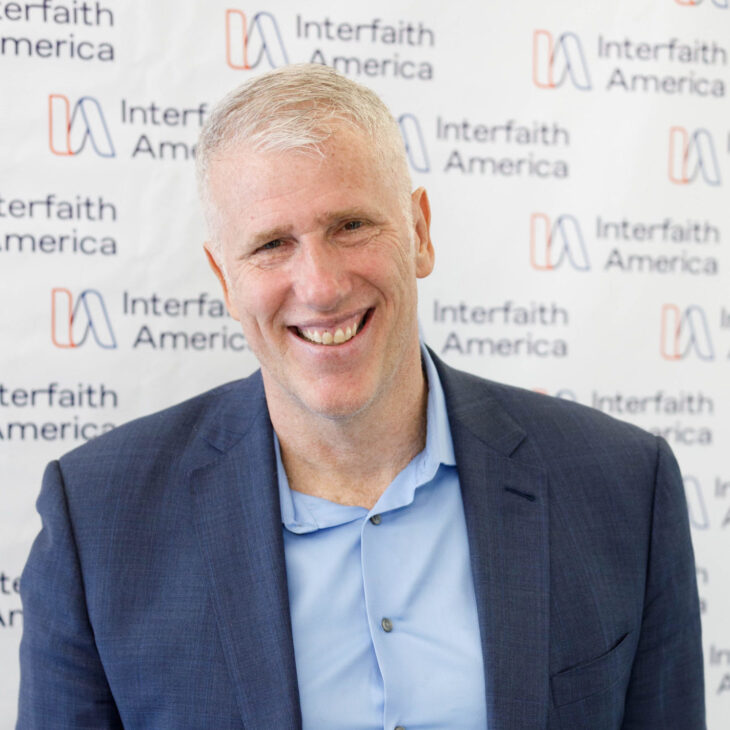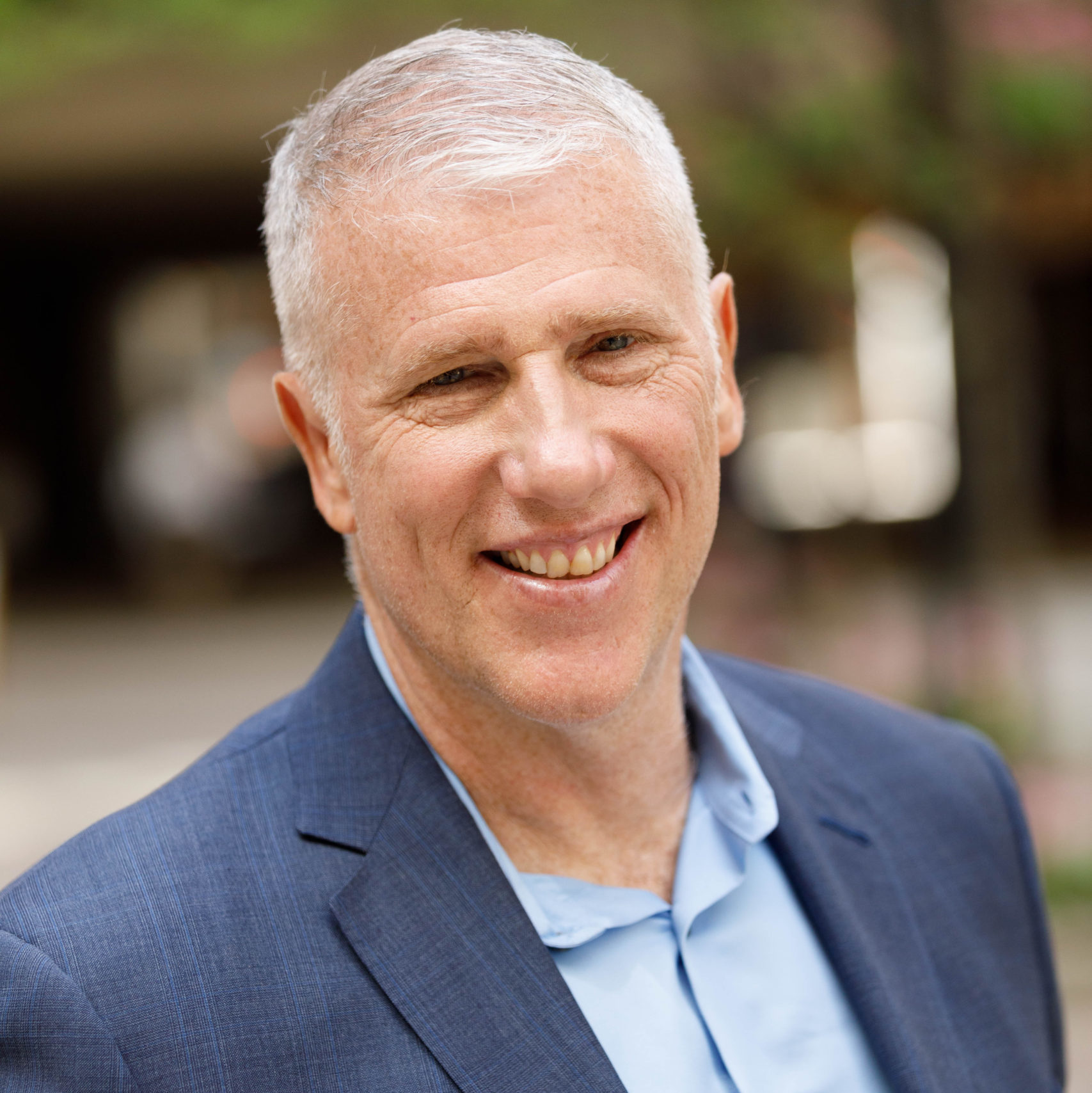What ‘Good Interfaith’ Can Do: My Top 5 Takeaways from Interfaith America
July 29, 2022

Three years ago, I joined the team at Interfaith America. I had known Eboo Patel, Interfaith America’s founder and president, for over 20 years and had worked alongside him in the interfaith movement, and we always said we hoped we could work closely together some day. Well, when the opportunity came for me to join the team, I jumped.
These last three years have been challenging for the world, for our nation and for many of us in our personal lives. Yet I am so grateful that I have been able to be part of the remarkable team at Interfaith America as we showed the power of interfaith cooperation to navigate these challenges and to prove, once again, how indispensable interfaith knowledge and networks are to the well-being of our world.
As I begin the next chapter of my professional career, I want to take a moment to reflect on five ways that my time at Interfaith America has confirmed, and often expanded, my understanding of interfaith work, and what I will be taking with me as I assume the role of president at Interfaith Alliance.
Good interfaith tells a story we need to hear.
Whenever people of different religious or spiritual backgrounds come together there is a story. Narrative work around interfaith encounters and cooperation goes deep into what gives people their meaning and spreads wide as it impacts the community and society around them. Interfaith America created my position of Senior Advisor for Public Affairs in recognition that storytelling was important. As part of our narrative work, we developed Interfaith America Magazine, which has become an indispensable source of diverse interfaith voices, inspiration and resources. I love the editorial team that we have in place and am as proud of this website as any of the others I have launched. We also will be launching a podcast in the fall, “Interfaith America with Eboo Patel,” and have amazing storytelling on our social media, not to mention the extensive media coverage of our work. Interfaith America the organization invested in narrative work and is telling the story of interfaith America the nation.
Good interfaith innovates to changing contexts.
I began my public religious leadership just as the internet became accessible to the public. I saw how powerful this tool was and have been hoping to find an interfaith group that would take the internet seriously as a location for interfaith engagement and to counter the hatred and disinformation that fester on the web with deadly implication in real life. Working with an extraordinary set of colleagues, Interfaith America developed #Interfaith: Engaging Religious Diversity Online. Different contexts and realities require innovation to develop specific tools to perform interfaith work – and Interfaith America helped make that possible.
Good interfaith reflects, reckons and improves.
As the nation reckoned with the deadly brew of racism and police brutality in the aftermath of the murder of George Floyd, the interfaith world also considered our own problematic assumptions around the work we were doing. This important questioning led Interfaith America to ask what interfaith work would look like if the Black experience was at the center, rather than the periphery. Interfaith America began to recognize and celebrate the interfaith experience within the Black community and the contributions of Black religious individuals and communities that had fundamentally shaped the nation. With a new racial equity commitment, Interfaith America has launched the Black Interfaith Project and the Vote is Sacred and held events at the White House as well as at the National Museum of African American History and Culture.
Good interfaith responds to national needs.
COVID-19 took over a million lives in America alone. When the vaccine became available, it became clear that religious communities could be a valuable resource in helping people get the vaccinations as well as encouraging vaccination adoption. Interfaith America partnered with Public Religion Research Institute (PRRI) to do the first polling that helped the country better understand religious attitudes around vaccination and used that information to mobilize thousands of emerging leaders to work with their own religious communities in the Faith in Vaccine Ambassador (FIVA) program. An interfaith response saved lives and was yet another proof of concept of the power of religious groups working together for the common good.
Good interfaith helps us listen.
Americans are as polarized as we have been since the Civil War. There are great divisions that threaten our nation, and fracture seems increasingly possible. At its core, interfaith requires listening to each other. Sometimes that is hard, as there are social issues that all of us, me included, feel strongly about. Doing the work to understand one another does not mean we have to agree, but it does mean that we recognize the humanity in even those with whom we disagree. Interfaith America takes bridgebuilding seriously, supporting higher education programming such as Bridging the Gap and even helping to create a national bridgebuilding bill. In his new book, “We Need to Build: Field Notes for Diverse Democracy,” Eboo emphasizes the importance of building as we think of the world we want to live in, and building bridges is at the core of that vision.
Finally, good interfaith involves great people, and I have been honored and grateful to work with great people at Interfaith America. I have so much love and admiration for the team and I am looking forward to many more opportunities to work and play alongside you and all those who wish to work across religious difference to build a beautiful world together.
Share
Related Articles
Higher Education
What Does Interfaith Engagement Mean from an Evangelical Perspective?
American Civic Life
American Civic Life

Paul Brandeis Raushenbush
Growing up in an interfaith family instilled in Paul an “interfaith heart.” Paul led our Public Affairs work including media relations, Interfaith America Magazine and narrative strategy, until July 2022. Paul started the Interfaith and Tech area and developed the curriculum #Interfaith: Engaging Religious Diversity Online and an ongoing project combating digital disinformation. Paul was an editor at Beliefnet.com before founding and leading the religion section at HuffPost, which under his leadership grew to the largest interfaith religion site online. With a bachelor’s degree in religion from Macalester College and a Master of Divinity from Union Theological Seminary, he served in churches and as associate dean of religious life at Princeton University. He is an ordained American Baptist minister. In September 2022, Paul will become the President and CEO of Interfaith Alliance.



